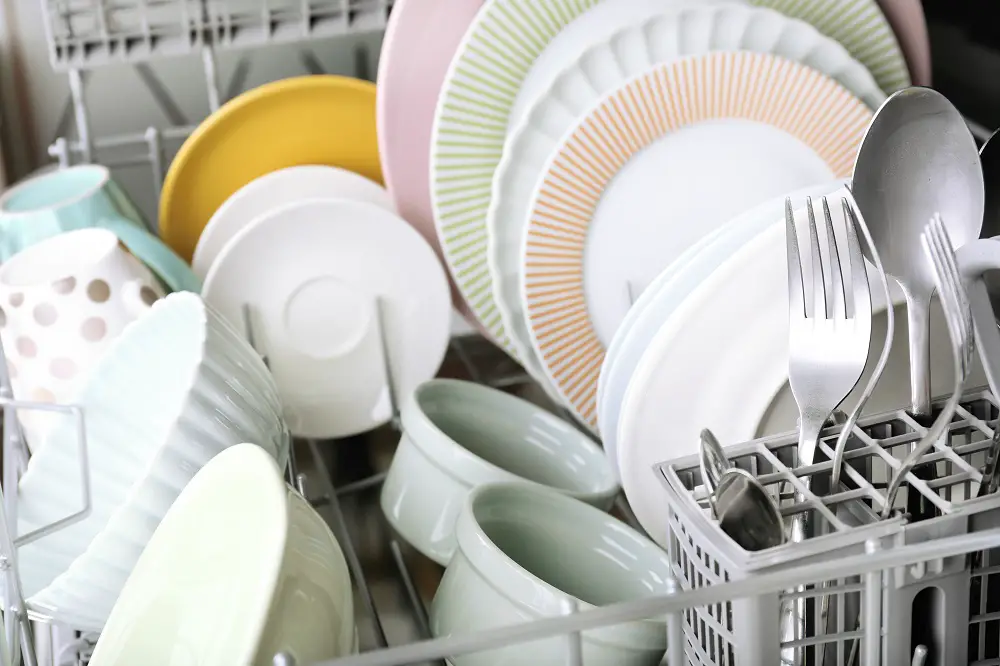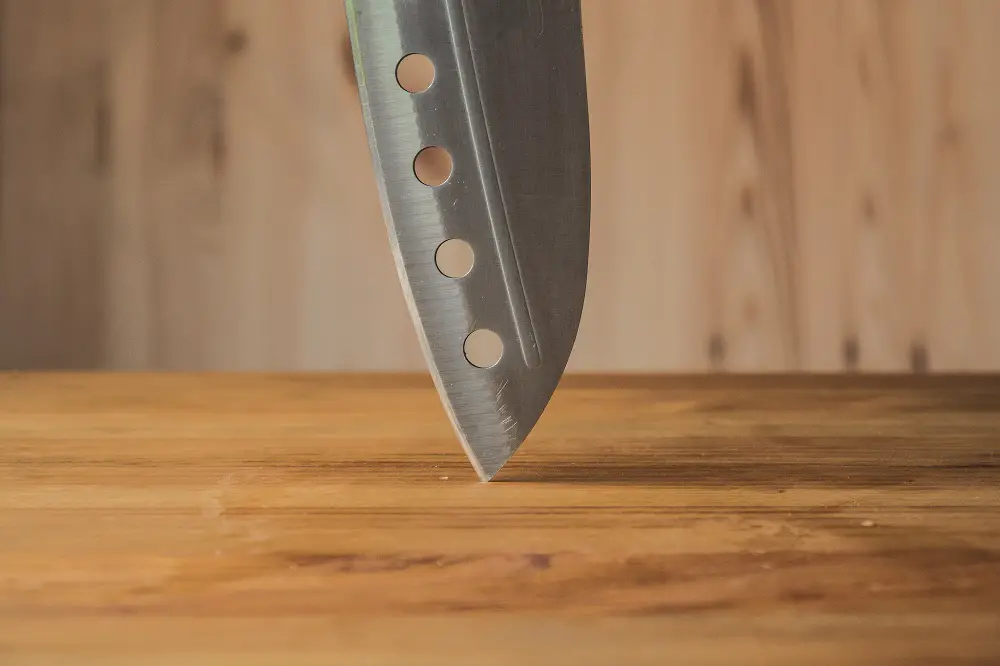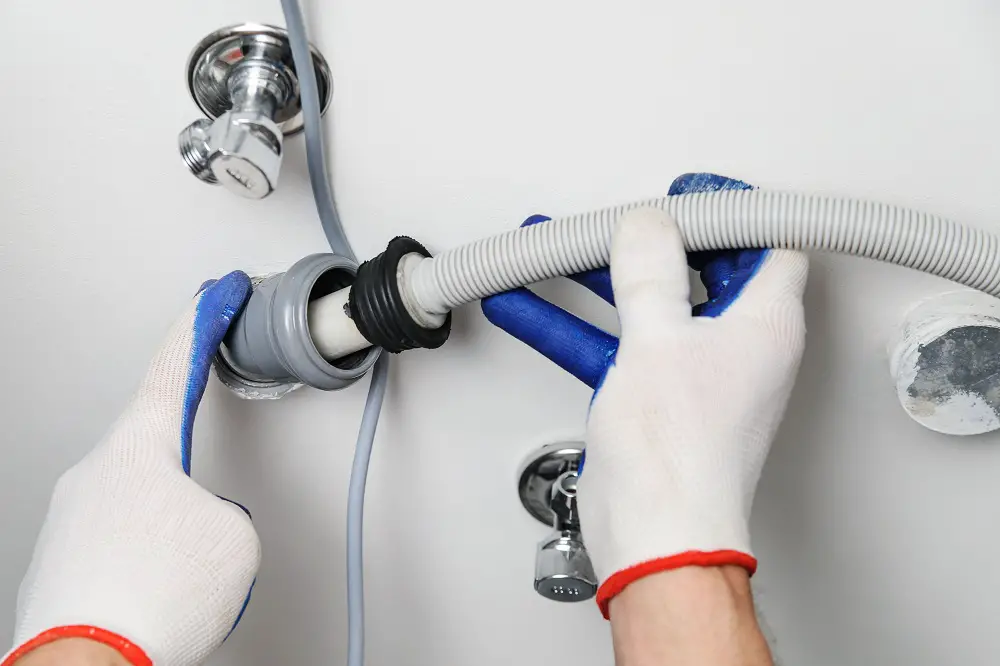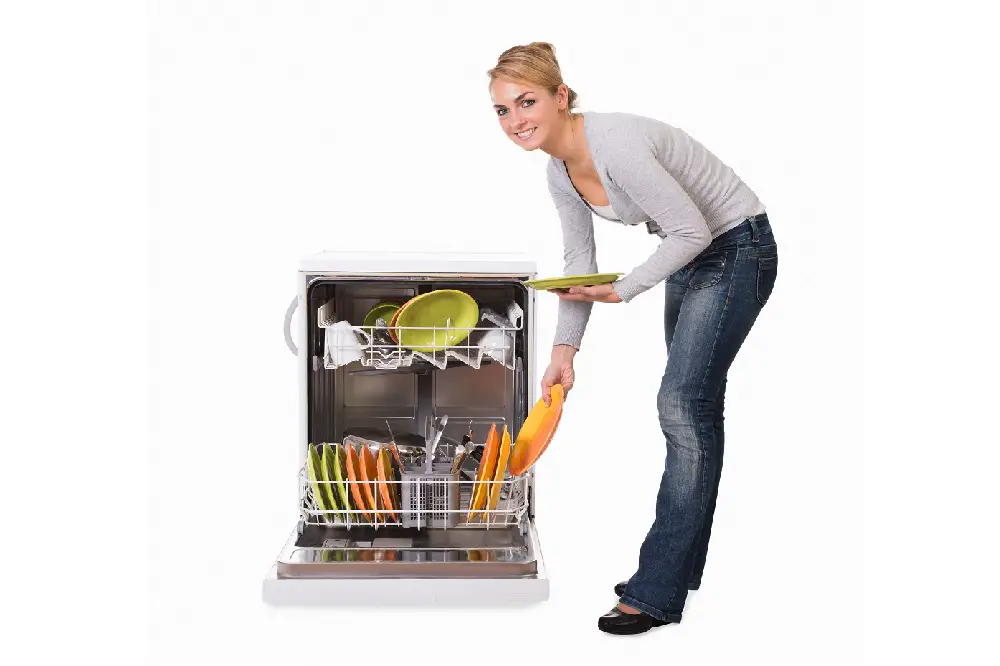Keeping your countertop dishwasher clean ensures the appliance does its job efficiently.
No matter how carefully and correctly you load your dishes into the machine, without regular cleaning, it will have an unpleasant smell and residue buildup. This could lead to inefficient wash cycles, damage to its parts, and reduced lifespan.
Cleaning your countertop dishwasher doesn’t require much; you’ll mostly need everyday items you can find around the house. The frequency of dishwasher cleaning depends on how often you use it.
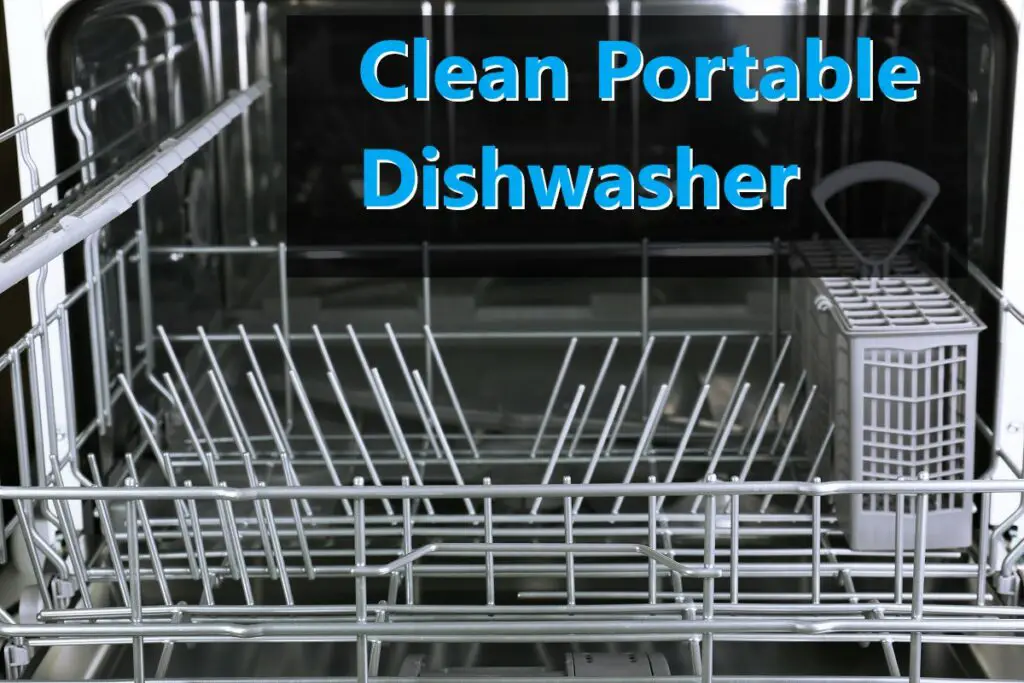
Read on to know how to clean a countertop dishwasher correctly and how often you must clean it.
Table of Contents
Why Should I Clean My Countertop Dishwasher? (And When)
While a dishwasher may help clean your dishes, food particles might accumulate over time in the drain filter, hose, spray arms, or hidden crevices.
Greasy residues, hard water stains, undissolved detergent, and water minerals can lead to build-up on the machine’s interior walls and filter and clog the spray arms.
Moreover, standing water in the appliance can cause mold growth and deteriorate performance.
Regular cleaning helps prevent these factors from causing problems in functioning (eventually leading to service and repairs). It also helps avoid terrible smells and the growth of microscopic organisms.
Wondering how long portable dishwashers last? Read our article and keep cleaning to achieve the maximum lifespan.
Most modern dishwashers are equipped with self-cleaning features.
However, if your model doesn’t have this feature, try deep cleaning once a month.
You can refer to the user manual to know how to clean the appliance best.
How often you should clean your countertop dishwasher depends on the frequency of wash cycles.
Minimal cleaning is required weekly, while deep cleaning is recommended once a month (or once in 2-3 months for infrequent use).
Here’s what you must keep in mind for cleaning your countertop dishwasher:
- After each use:
Remove any visible food residue from the bottom of the dishwasher and the filter well. - Weekly cleaning:
Remove the filter and clean it under running water. Wipe the door’s edges and gasket, the exterior, and the interior. - Monthly cleaning:
Deep clean the interior with a cleaning cycle.
If you notice any of the following symptoms, you’ll know it’s time to clean your countertop dishwasher:
- Mold growth
- Dishes smell bad after a wash cycle
- White or yellow mineral deposits on the washed dishes
- Dishes remain dirty after the wash cycle
- Unpleasant odor inside the appliance
- A film on the dishwasher’s interior surface
How To Clean a Countertop Dishwasher?
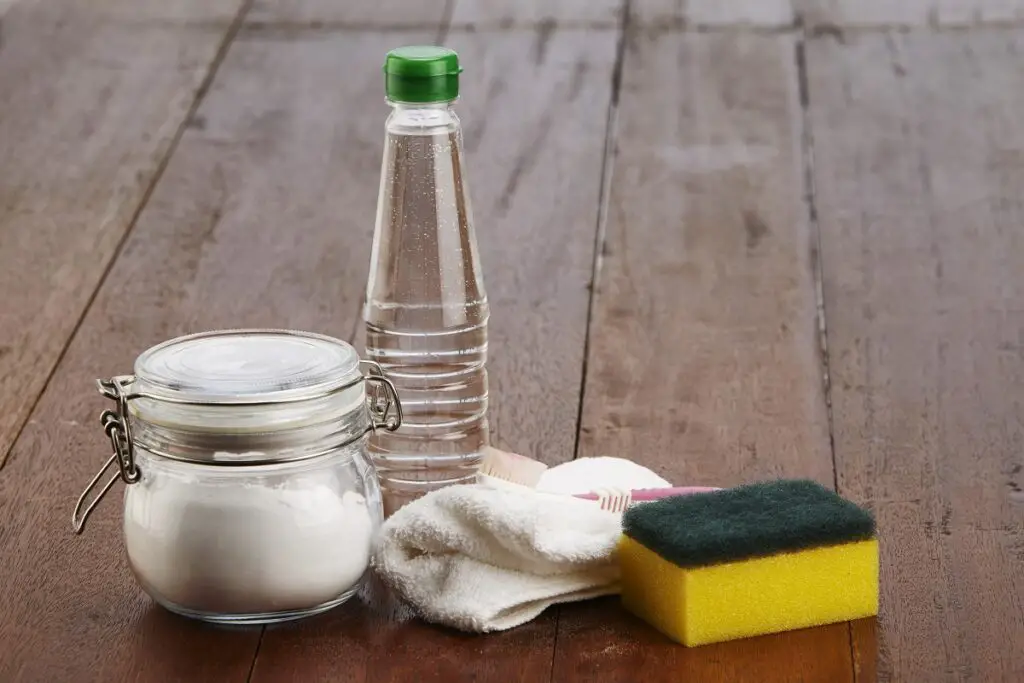
Now that you know how often you must clean your countertop dishwasher, here are the supplies you’ll need to get started:
- Dish soap
- Baking soda
- Distilled white vinegar
- Microfiber cloth
- Sponge
- Old toothbrush
- Soft-bristle cleaning brush
- Toothpick or thin wire
Techjut tip: Empty the appliance of any dishes before you start cleaning. Also, unplug the power cord unless running a deep clean cycle (even if it seems obvious, most people aren’t doing it).
Weekly Cleaning Routine
The weekly cleaning routine must include wiping the exterior and interior and cleaning the filter.
The Exterior
Here’s how you can clean the outside of your countertop dishwasher:
- Clean the control panel
Take an old toothbrush and dip it in a water and dish soap solution. Use it to clean around the control panel (buttons or dials).
- Clean the door
Use a sponge or microfiber cloth and some mild dish soap to clean the exterior of your dishwasher door (mostly made of plastic or painted metal).
Don’t forget to scrub around the handle.
Rinse with a clean wet cloth and wipe dry with another dry cloth.
- Clean the body of the dishwasher
Wipe the entire body of the dishwasher with the same microfiber cloth and gently scrub away any residues on the outside (that can result from kitchen activities). Use another dry cloth to wipe dry.
The Interior
The interior of the countertop dishwasher will take more effort to clean than the exterior. Here’s how you can go about it:
- Clean the door
Use a damp sponge or microfiber cloth to wipe away any residue or splatters on the inside surface of the door. Wipe along the door edges and the bottom of the door attached to the hinges.
- Clean the door’s gasket
It’s common to see mold on the rubber seal around the door without regular cleaning. To avoid this, use an old soft toothbrush dipped in a mild all-purpose cleaner or warm, soapy water and gently scrub any sticky gunk from the gasket.
Use a paper towel or a damp cloth to wipe clean.
- Clean the dispenser
Use the same old soft toothbrush to scrub the dispenser compartment gently. This helps remove any debris or traces of leftover detergent. Use a damp cloth to wipe clean.
- Clean the filter
Pull out the vessels-rack; you can find the countertop dishwasher’s filter below the bottom spray arm. Check the user manual or manufacturer’s website for details on how to remove it.
Remove the filter from its well and rinse it under running water. Scrub the plastic frame and mesh screen with a soft toothbrush to remove any grease or sediments hiding in the crevices. Rinse the filter once more, and lock it back in place.
Monthly Cleaning Routine
A good deep cleaning routine will help your countertop dishwasher remain efficient and in good shape, not requiring frequent repairs, and maintain a good lifespan.
Here’s what your monthly cleaning routine should look like if you use your dishwasher daily.
Clean the Strainer
Pull out the vessel rack and examine the drainage strainer on the dishwasher floor. Clear off paper labels, food particles, or other small items clogging the holes.
Dip a soft-bristled cleaning brush in vinegar and scrub away any stubborn debris. Replace the rack.
Clean the Spray Arms
Remove the rack to be able to access the water-spraying arms. The tiny holes in the spray arms can get clogged with food particles or mineral buildup from hard water.
If your countertop dishwasher has clogged holes, it might not be able to spray water onto the surface of the dishes; this will leave the dishes soiled.
Use a toothpick or a thin wire and insert its tip into each hole to remove debris or clogs.
Clean the Rack
After removing the rack from the dishwasher, use the soft toothbrush to remove any debris stuck in the grids. Repeat the same for the cutlery basket. After scrubbing off any debris or residue, rinse them under running water.
Place the rack into its place in the dishwasher.
Run a Cycle With Vinegar
Place one cup of vinegar in a dishwasher-safe container (plastic or glass) on the dishwasher rack. Run a heavy wash cycle with hot water, without any dishes or detergent.
The vinegar helps clean any grease buildup inside your countertop dishwasher. It breaks down any remaining bits of food, grease, residue, soap scum, and other leftover grime.
Follow With a Cycle Using Baking Soda
After the vinegar cycle, sprinkle a cup of baking soda on the interior floor of your empty countertop dishwasher. Run a quick hot water rinse cycle for some extra freshening.
Once done, opt for air drying by opening the dishwasher door rather than running the drying cycle. The baking soda helps remove any lingering odors.
All-in-One Alternative: Dishwasher Cleaner
Rather than running a cycle with vinegar followed by baking soda, you can use dishwasher cleaners instead.
This helps remove detergent residue, mineral buildup, or trapped particles from the countertop dishwasher’s spray arms and internal parts. Follow the label’s directions to use any dishwasher cleaner the right way.
Inspect the Dishwasher Drain Hose (And Clean It if Required)
Disconnect the drain hose from the countertop dishwasher and use a vacuum cleaner or a hose cleaning brush to clear out any debris clogging the hose.
Alternatively, for more efficient cleaning of the hose, use a funnel to pour a mixture of equal parts of vinegar and water into the drain hose.
Allow the mixture to remain in the hose for about 30 minutes.
Run hot water through the hose and flush it out thoroughly.
We go in-depth here: How to Clean A Portable Dishwasher Drain
Avoid This When Cleaning a Countertop Dishwasher
Here are some things to keep in mind when cleaning your countertop dishwasher to ensure you don’t cause any damage to it:
- Avoid using bleach or bleach-based cleaners, especially for countertop dishwashers with stainless steel interiors.
- Never mix bleach with vinegar. This combination can create potentially lethal chlorine gas.
- Avoid using hydrogen peroxide to remove mold or mildew unless the owner’s manual mentions it’s safe.
- Avoid using a brush with hard metal bristles to clean the countertop dishwasher’s exterior or interior. It may cause scratches on the body.
- Avoid using abrasive cleaners or pads that can scratch or damage the dishwasher’s exterior.
- Never mix vinegar and baking soda in the same cleaning cycle. The mixture will excessively foam and result in a mess that you’ll have to clean up.
Conclusion
Now that you know how to clean your countertop dishwasher, you’ll be able to maintain a clean and efficient appliance. With no leftover residue, the water and detergent can spray through the machine at full strength, resulting in clean dishes.
Don’t forget to look out for dirty dishes at the end of a wash cycle; it’s a sign that your dishwasher needs a deep clean. If there’s an option for a self-cleaning or sanitizing cycle, run it once every month; if not, use a dishwasher cleaner or vinegar followed by baking soda.
